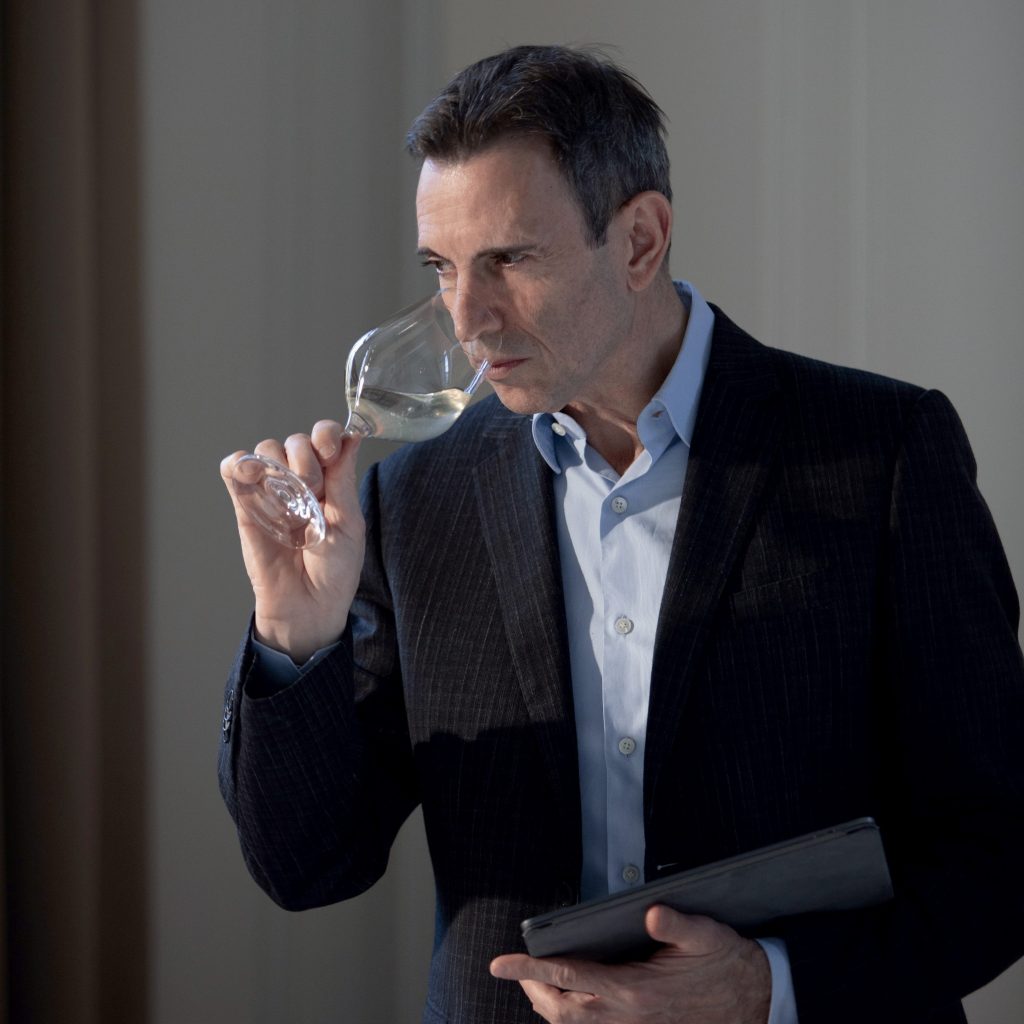A moment with Dom Ruinart’s Chef de Caves
Author: Hannah Crosbie

What makes a “great” vintage? Some are immediately obvious, thanks to perfect conditions in both the vineyard and the cellar. Others emerge – phoenix-like – to unsuspecting vignerons. We speak with Ruinart’s Chef de Caves Frédéric Panaïotis about the release of their latest vintages, and the surprises it offered.
A cool, dry spring and a rainy August: the ’10 vintage conditions were challenging in Champagne. What were the first indications to you that this difficult year would result in a remarkable wine?
There were none until we started to assess the vins clairs (base wines) in early November. The year had been quite challenging, with botrytis threatening and even damaging some prime vineyards of Chardonnay (and most of the Pinot Noirs and Meuniers). But during the first tasting of the still wines after malolactic fermentation, we were blown away by the richness, focus and potential of the best Chardonnays.
Now, looking back, some parameters were actually quite promising. But, if you had asked me in October ’11 if a Dom Ruinart vintage was in the making, I would have probably laughed.
Champagne is usually aged under a metal crown cap before being disgorged and closed with cork. But, in ’10, you took the decision to revert to cork closures to age the wine: why?
Jean-François Barrot, one of my predecessors as Chef de Caves, experimented with cork and bottles several vintages both with cork and crown caps. When I joined in ’07, I was able to taste and compare these wines.
I found the difference striking: the Champagne under cork was always more intense, more complex, tasted younger and had more potential. It had subtle, reductive flavours which were perfectly suited to the great Chardonnay spectrum. It took a few years to check feasibility on a larger scale, and when the ’10 vintage showed so much potential we decided to start with that vintage. We certainly don’t regret it.
Do changing climate patterns present challenges when it comes to making great vintage wines with Chardonnay?
In many ways, yes – although the current period is quite favourable. I doubt we will say the same in 20 or even 10 years. In the past few years, finding the optimal harvest date when grapes ripen late August has been quite challenging. It looks like 2022 will offer the same difficulty.
Tell us something surprising about your role as Chef de Caves at Dom Ruinart.
As you may know, we collaborate every year with an artist, David Shrigley most recently. They spend time in our maison to learn about our history, our vineyards, our values and of course our wines. Then, they have carte blanche to create art pieces which will be displayed in contemporary art fairs worldwide.
Every year, I find it fascinating to taste Ruinart cuvées with them. I explain our style and how we achieve it, starting from the grapes and through the winemaking process. I always love their approach, how they view things differently, often more deeply than us winemakers can. Art is an incredibly helpful tool to develop our emotional intelligence and elevate our souls.
Finally, how would you describe the 2010 Dom Ruinart Champagne?
To properly describe it, you’ll need to have a glass of this cuvée in your hand. I’d say: intense, complex, poised, smoky, saline, savoury, reminiscent of a great white Burgundy. A sort of Corton-Charlemagne with bubbles.
Discover more about Dom Ruinart and browse our complete selection here.


